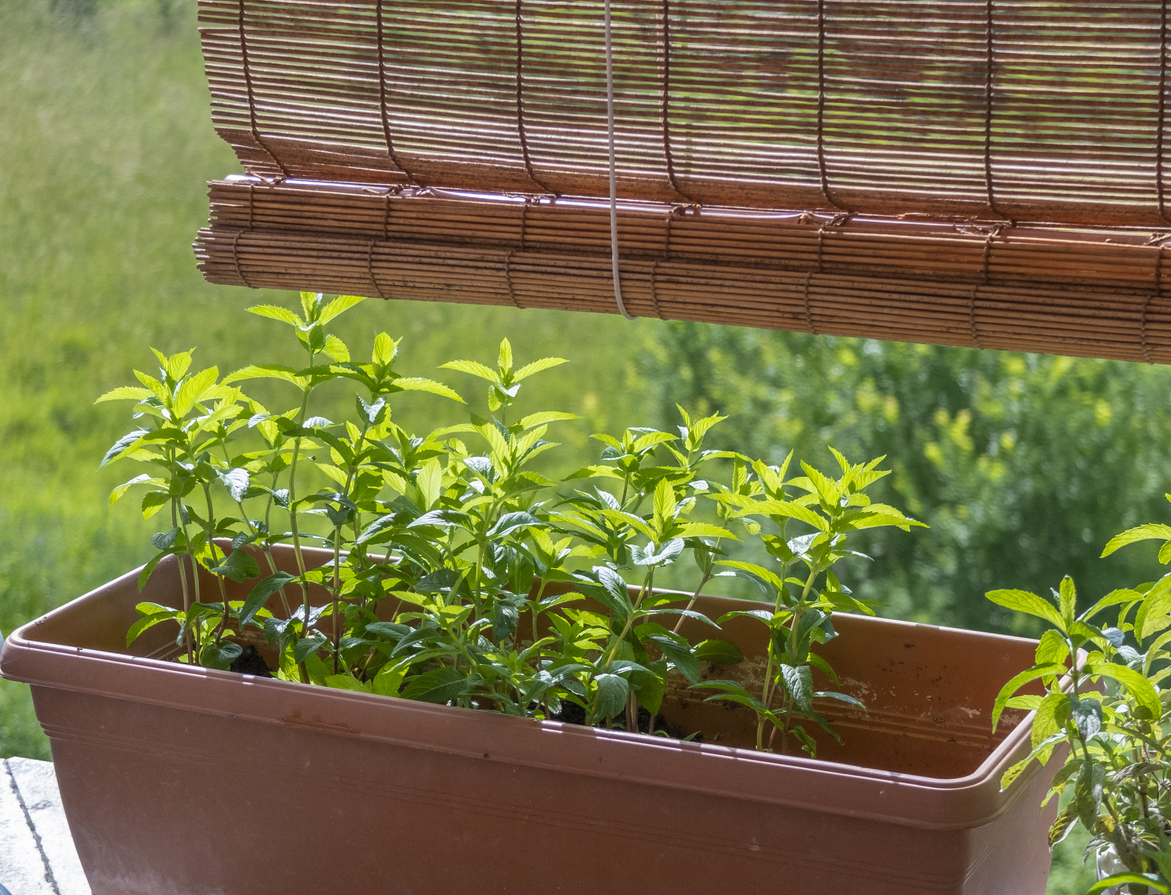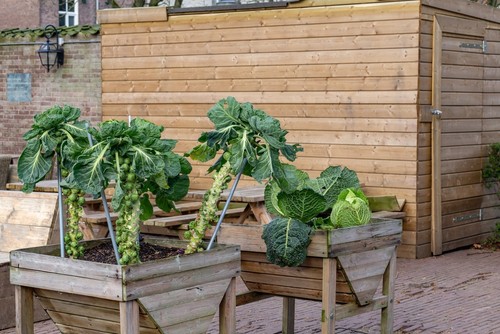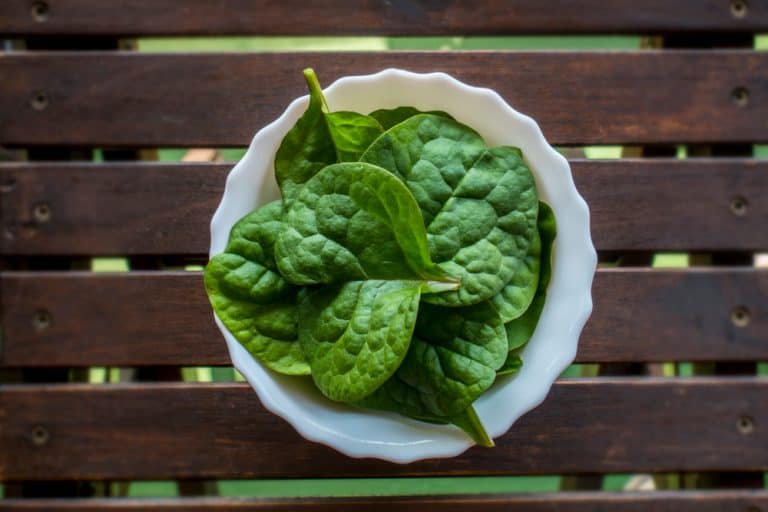The Ultimate Low-Effort Guide: Growing Mint on Your Apartment Balcony in 5 Minutes a Day
Growing fresh herbs might seem challenging in an apartment, but mint is the perfect plant for balcony gardeners. This aromatic, versatile herb grows vigorously, requires minimal space, and provides continuous harvests for months. Whether you’re a first-time gardener or working with limited space, this guide will help you grow abundant mint with surprisingly little effort.
Getting Started: Containers and Placement
Choosing the Right Containers
The first step to balcony mint success is selecting appropriate containers:
- Container size matters: Choose containers at least 8 inches deep and wide to accommodate mint’s spreading root system.
- Dedicated containers: Mint is invasive and should always be grown in its own container, never mixed with other plants.
- Consider weight restrictions: Plastic containers are lightweight alternatives to ceramic or terracotta pots.
- Drainage is crucial: Ensure your containers have adequate drainage holes to prevent root rot.
- Hanging options: Hanging baskets or railing planters can maximize limited balcony space and allow mint to cascade attractively.
For beginners, a simple 10-12 inch plastic pot will provide enough space for a thriving mint plant that produces plenty for regular harvests.
Strategic Placement
Mint grows best with:
- 4-6 hours of sunlight: Morning sun with afternoon shade is ideal, especially in hot climates.
- Protection from intense afternoon sun: In summer months, too much direct sun can stress mint plants.
- Accessibility for easy harvesting: Keep containers within easy reach for quick snipping.
Remember that many balconies have microclimates—observe your space for a few days, noting which areas receive sun and shade throughout the day before finalizing placement.
Plant Selection and Planting
Mint Varieties: Which to Choose?
Consider these popular options:
- Spearmint: Milder flavor, excellent for cooking and tea
- Peppermint: Stronger menthol flavor, ideal for tea and desserts
- Chocolate mint: Subtle chocolate aroma, great for desserts
- Apple mint: Fruity undertones, perfect for summer drinks
- Moroccan mint: Traditional tea variety with bright flavor
Choose varieties based on your culinary preferences or grow multiple types if space allows.
Seeds vs. Starter Plants
You have two options for starting your mint garden:
- Seeds: Possible but slower and less reliable. Purchase mint seeds from:
- Garden centers and nurseries
- Online seed retailers
- Some grocery stores with gardening displays (seasonal)
- Starter Plants: Highly recommended for mint:
- Available at farmers’ markets
- Local nurseries and garden centers
- Grocery store produce sections (often sold as living herbs)
- Online plant retailers
- Division from a friend’s plant (mint is easy to divide and share)
Starting from established plants gives you a significant head start and more reliable results. For mint specifically, starter plants are strongly recommended over seeds.
Preparing Your Growing Medium
Mint isn’t particularly fussy about soil, but it grows best in:
- Moisture-retentive potting mix: Use a commercial potting soil designed for containers.
- Enriched options: Choose potting soil with compost or slow-release fertilizer mixed in.
- Well-draining yet moisture-holding: The ideal mix retains moisture without becoming waterlogged.
A simple approach: purchase a quality organic potting mix and add about 20% compost if available.
Planting Your Mint
Whether using starter plants or seeds:
- Fill your container with potting mix to about 1 inch below the rim.
- For starter plants: Dig a hole slightly larger than the root ball, place plant at the same depth it was growing previously, and gently firm soil around roots.
- For seeds (less common): Scatter seeds lightly over the soil surface and cover with ¼ inch of potting mix. Thin seedlings to 6-8 inches apart once they develop.
- Water thoroughly until water runs out the drainage holes.
Pro tip: Consider planting just one mint plant per container—it will quickly fill the space.
Minimal Maintenance Routine
Watering Wisely
Mint enjoys consistent moisture but not soggy conditions:
- Regular watering: Keep soil consistently moist but not waterlogged.
- Check soil moisture by inserting your finger about an inch into the soil—water when it feels slightly dry at this depth.
- Observe the plant: Slight wilting indicates it’s time to water.
- Frequency guide: Typically every 1-3 days in warm weather, less in cooler conditions.
Most balcony mint needs watering more frequently than garden mint, as containers dry out faster than ground soil.
Fertilizing (Rarely Needed)
Mint is not a heavy feeder and often thrives with minimal fertilization:
- Optional boost: Apply a diluted liquid fertilizer once a month during growing season.
- Less is more: Overfertilizing reduces essential oil content and flavor intensity.
- Signs needed: If leaves appear pale green or yellowish, apply half-strength all-purpose fertilizer.
Many mint growers find that an initial quality potting mix provides sufficient nutrition for the entire season.
Pruning for Bushy Growth
Regular pruning encourages mint to grow fuller rather than taller:
- Pinch growing tips regularly to promote branching.
- Remove flower buds as they appear to maintain leaf flavor and plant vigor.
- Cut back leggy stems to encourage fresh, bushy growth.
A quick pinch of growing tips while harvesting for your morning tea takes seconds but makes a significant difference in plant shape.
Protecting from Common Challenges
Balcony mint faces few serious problems, but watch for:
- Heat stress: Move to shadier spots during heatwaves.
- Rust or powdery mildew: Improve air circulation and avoid overhead watering; remove affected leaves.
- Pest management: Aphids occasionally appear—a quick spray of water or diluted dish soap solution (1 teaspoon per quart of water) is usually sufficient.
Harvesting Your Mint
What is Harvesting?
Harvesting simply means collecting or picking the parts of the plant you want to use. With mint, harvesting is the process of cutting stems or picking leaves to use in your cooking, tea, or other uses. Unlike many plants where you harvest once at the end of the season, mint can be harvested continuously, and regular harvesting actually encourages more growth.
When to Start Harvesting
Mint is ready for its first harvest when:
- The plant reaches 6-8 inches in height
- Stems have developed multiple leaf sets
- Typically 4-6 weeks after planting starter plants (8-10 weeks from seed)
Harvesting Technique
The secret to abundant mint is proper harvesting:
- Use clean scissors or pinch with your fingers.
- Cut stems just above a leaf node (where leaves attach to the stem).
- Harvest up to one-third of the plant at once.
- Focus on the top portions of stems for the most flavorful leaves.
Regular harvesting (even small amounts) encourages bushier growth and prevents flowering, which can reduce flavor intensity.
When to Rejuvenate
Even with proper care, mint may become woody and less productive over time:
- Complete rejuvenation: Every 1-2 years, cut the entire plant back to 1-2 inches above soil level.
- Division: Every 2 years, remove the plant, divide the roots, and replant a portion in fresh soil.
- Signs it’s time: When stems become woody, leaves get smaller, or growth slows noticeably.
Seasonal Considerations
Mint is fairly adaptable throughout the seasons:
- Spring: Ideal planting time; rapid growth begins.
- Summer: Provide afternoon shade and increase watering frequency; harvest regularly to prevent flowering.
- Fall: Growth slows but continues; reduce watering slightly.
- Winter: Growth may pause in cold climates; protect from freezes or bring indoors.
Year-Round Growing Possibilities
Growing mint year-round depends on your climate:
- Mild climates (USDA Zones 8-10): Year-round outdoor growing is possible with minimal protection. In summer, provide afternoon shade and more frequent watering.
- Moderate climates (USDA Zones 5-7): Outdoor growing from spring through fall. For winter, either:
- Bring containers indoors near a sunny window
- Accept dormancy and reduced growth, protecting pots from hard freezes
- Expect the plant to regrow from roots in spring even if top growth dies back
- Cold climates (USDA Zones 4 and below): Indoor growing necessary during winter months. Place near a south-facing window or under grow lights. Reduced growth is normal during winter even indoors.
The good news: mint is surprisingly resilient and will often survive conditions that would kill more delicate herbs.
Using Your Mint Harvest
Fresh mint from your balcony garden can be used in numerous ways:
- Fresh uses: Tea, cocktails, salads, desserts, water infusions
- Preserving methods:
- Drying (hang bundles upside down in a dark, ventilated area)
- Freezing (in ice cube trays with water or olive oil)
- Infusing in vinegar or honey
Even a single healthy mint plant can provide enough leaves for daily tea plus extra for preservation.
Final Tips for Success
- Contain the enthusiasm: Remember that mint is vigorous—never plant it directly in shared containers.
- Keep it accessible: Place your mint where you’ll see and smell it daily to remember to use it.
- Harvest frequently: Regular cutting encourages new growth and prevents flowering.
- Share divisions: When dividing overgrown plants, give extra portions to friends.
Growing mint on your balcony is one of the most rewarding and least demanding forms of apartment gardening. With minimal setup time, just a few minutes of weekly maintenance, and regular harvesting, you’ll enjoy fresh, aromatic mint that adds flavor to cooking, drinks, and even your balcony’s atmosphere.
Your mint garden journey starts with a single container—and mint’s vigorous growth means you’ll see (and smell) results fast enough to stay motivated and excited about your new mini herb garden.







